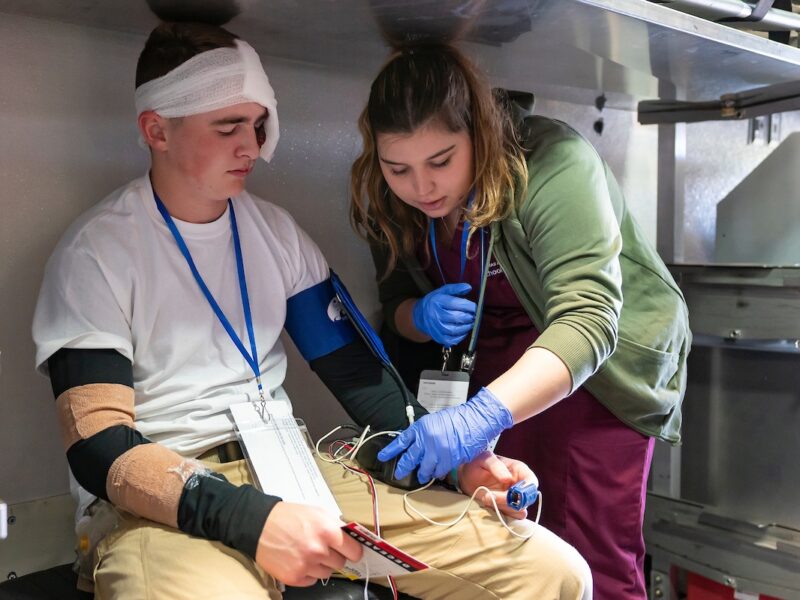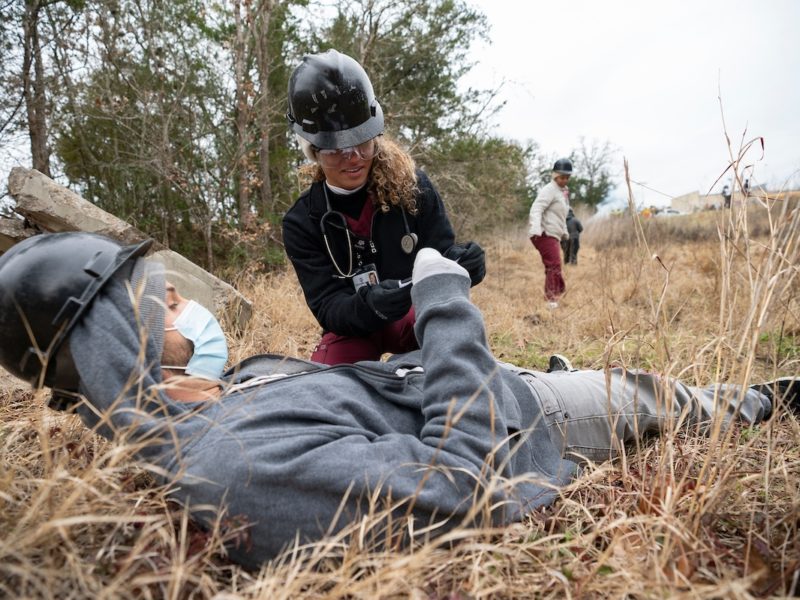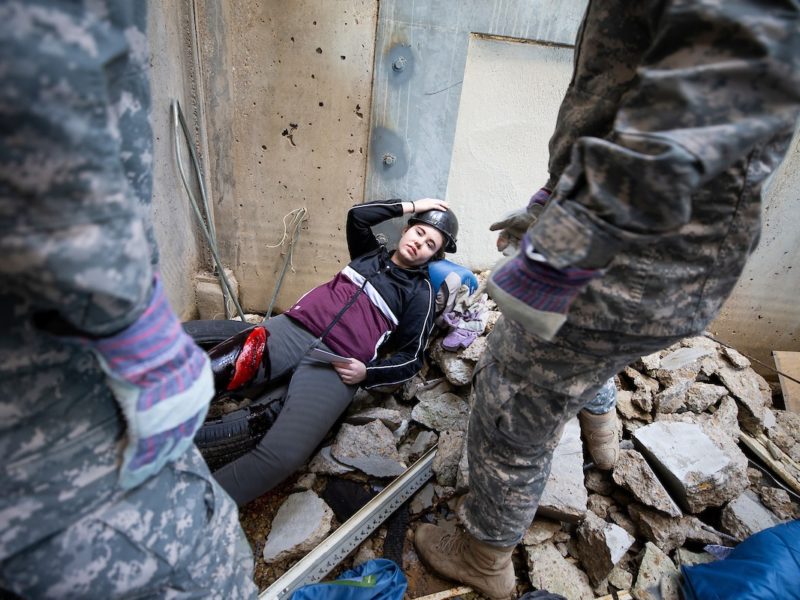Disaster Day Simulation Puts Future Health Care Professionals To The Test
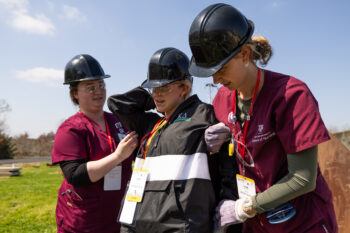
Texas A&M University students sorted through the chaos of tropical storm-induced floodwaters, an earthquake and a shooting on Friday in a simulated disaster designed to prepare future health care professionals for large-scale emergencies.
The student-led exercise, held at Texas A&M Engineering Extension Service’s (TEEX) Disaster City in College Station, tested students in a variety of areas, including triage, patient care, mental health support and disaster management.
Started by the Texas A&M School of Nursing in 2008, the training has grown from a small event in the gym of a local church to a daylong disaster simulation involving more than 700 students, over 100 faculty and staff members, and numerous emergency response professionals. Students from Texas A&M schools of dentistry, medicine, nursing, pharmacy and public health, as well as athletic training, psychology and veterinary medicine students and the Corps of Cadets, participated in the drill.
Christine Kaunas, assistant vice president for Interprofessional Practice, Education & Research (IPER) at Texas A&M Health Science Center, said the annual Disaster Day exercise is an important component of preparing students to work together in emergency situations.
“Since 2020 alone, Texas has seen over 15 disasters and related declarations, including wildfires, tropical storms, hurricanes, winter storms, and of course COVID-19. Ensuring that our health professions students are prepared to respond effectively when, not if, a disaster strikes is crucial,” Kaunas said.
More than 50 students from Texas A&M Health work to plan and organize the event, with oversight from faculty and staff members as well as staff from TEEX, the Texas Division of Emergency Management and participating partners.
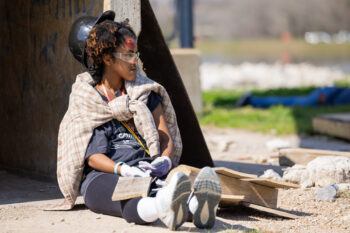
Each year, a new scenario is selected and kept secret until the day of the event to provide the realism of an unexpected situation. This year’s simulated disaster included a tropical storm, flooding, an earthquake and an active shooter. The students engaged in triage at the disaster site, patient care at mock field hospitals, mental health care and needs assessment at an evacuation shelter and family reunification center, and disaster management and simulation oversight at Disaster City’s Emergency Operations Training Center.
During the simulation, students take on the role of patients or providers or engage in search and rescue. Students who participate as patients receive makeup, known as moulage, to mimic injuries based on the scenario. Patients act out the case they are assigned, while students in roles of physicians and nurses do field assessments then transfer patients to a field hospital for more diagnosis and treatment. Pharmacy students work with providers to determine the medications needed, and psychology students provide the mental health care required of disaster victims. Athletic training and dentistry students provide specialized care in orthopedic and soft tissue trauma, and head and neck injuries, respectively. Public health students manage the disaster to deploy resources and address outbreaks. The veterinary students provide care for animals affected by the disaster.
Dr. Angela Clendenin, a Texas A&M Health instructional associate professor of epidemiology and biostatistics, said the exercise is effective because it has all the components of a real emergency, with different people coming together to solve the problem.
“It shows them exactly the things that can happen in a community and it gives them the soft skills of communication across disciplines, teamwork, leadership, collaboration, but at the same time, I think it gives them confidence so that if something were to happen in a community where they end up practicing, they can have that muscle memory,” she said.
Allyson Rioux, a first-year nursing student, acted out the role of someone with an injury and said she was interested in seeing how the other students would diagnose and treat her injuries.
“This is exactly what you learn in nursing school, how to assess symptoms and then make a treatment plan based on what they’re presenting with,” she said.
Other students said the exercise helped connect their classroom experience with the real-life challenges of the profession.
“It’s really interesting to see what I’ve learned in my emergency management class play out. It is the first hands-on experience that I have really gotten,” said Olivia Bomba ’26, a public health major.
“Disaster Day serves as an amazing learning opportunity for students by striking a balance between the chaos of an emergency and providing the structure and support necessary for successful and meaningful learning,” said Lyssa Losa, a graduate student in environmental health at the School of Public Health and planning director for Disaster Day.
As the event has grown, so has the collaboration with corporations and government agencies, including H-E-B, Salvation Army, St. Joseph Health, Pulsara and the Texas Department of Emergency Management. Members of the university community, private and public partners, and representatives from local, state and federal agencies toured this year’s event to learn about Texas A&M Health’s efforts to address disaster response.
“Disaster Day stands as a testament to Texas A&M Health’s proactive commitment in shaping agile and resilient Aggie health professionals,” said Indra Reddy, chief operating officer and vice president at Texas A&M Health. “With the escalating frequency of large-scale emergencies, we take pride in the assurance that Aggie health professionals are well prepared and ready to respond.”
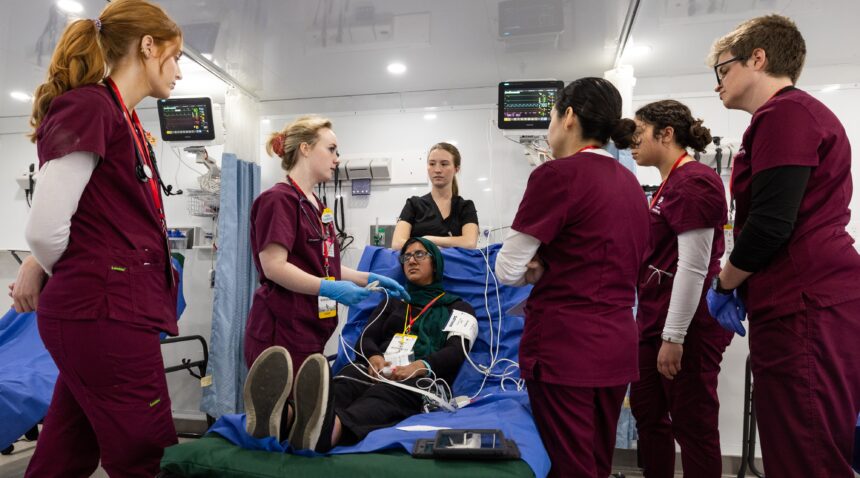
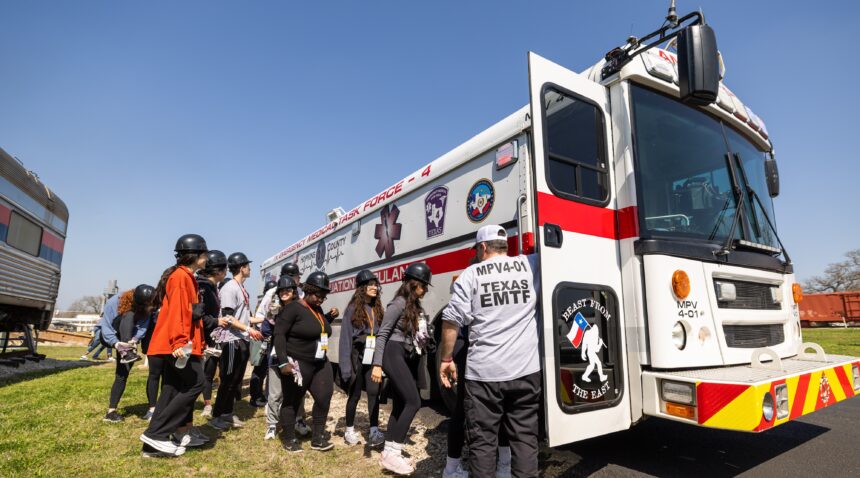
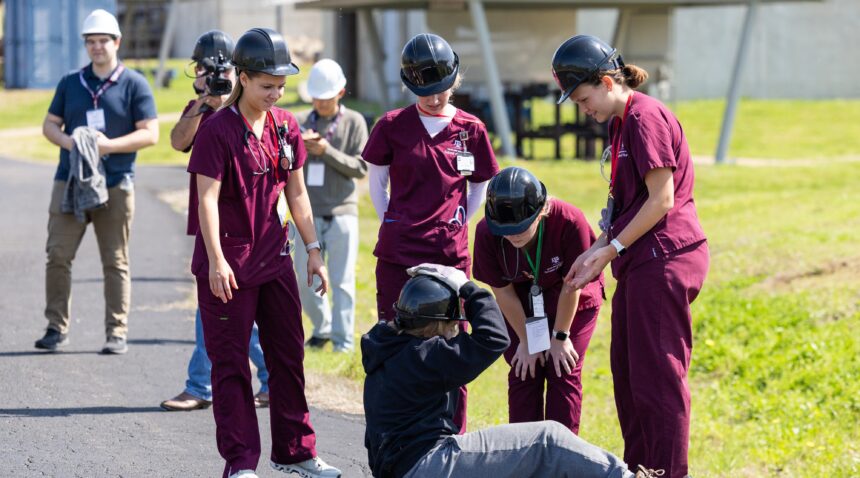
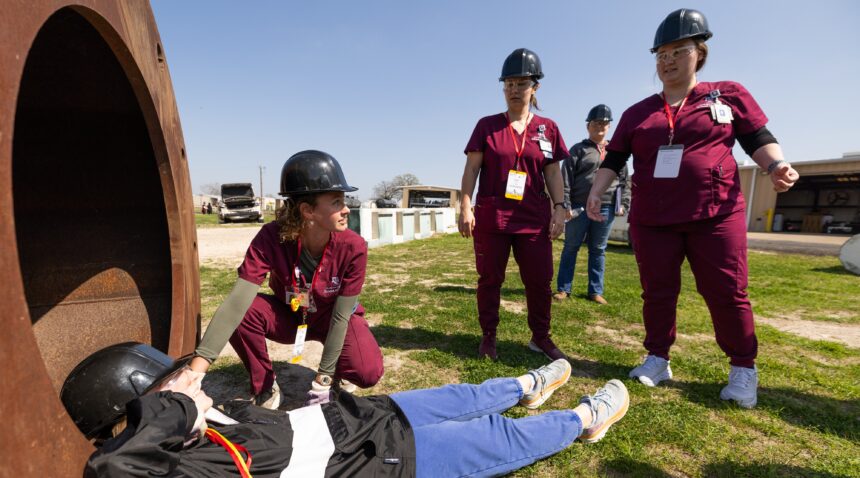
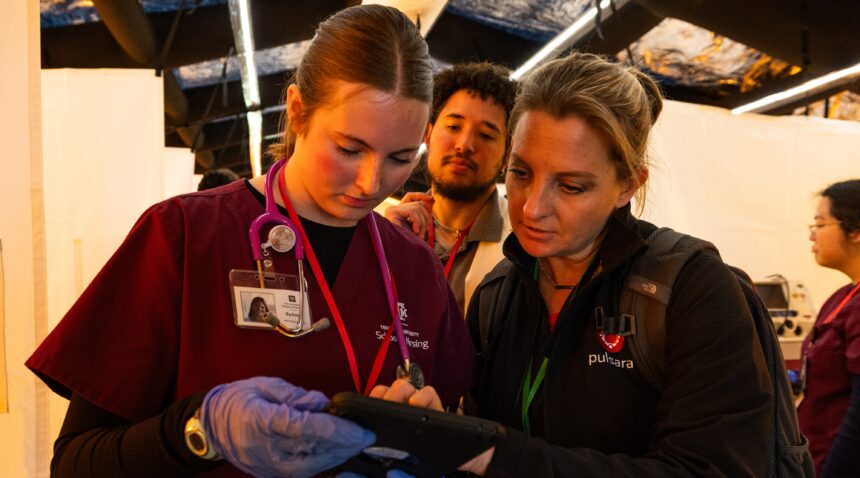
Media contact: Dee Dee Grays, grays@tamu.edu, 979-436-0611
Zoie Bodden from Texas A&M University’s Division of Marketing and Communications contributed to this article.
